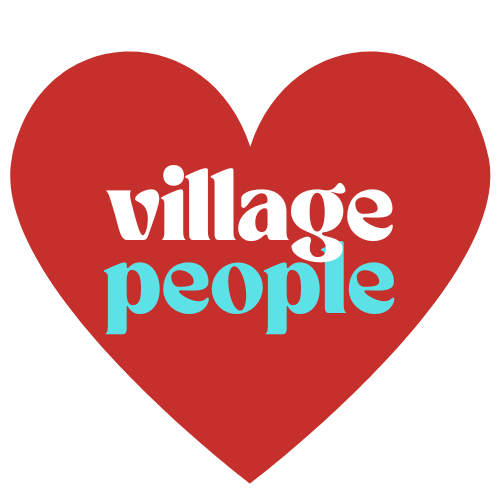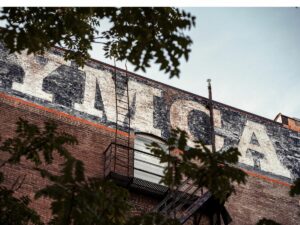Since the Village People’s “YMCA” was released 40 years ago, it has become a pop phenomenon. It is both a gay anthem and a mainstay at bar mitzvahs and Yankees games.
The Young Men’s Christian Association has also been immortalized by the song in popular culture. Former inhabitants of the McBurney YMCA in Chelsea say the reality of stays at the YMCA in those days was more nuanced than the lyrics depict. Gay culture and working-class fitness coexisted in the same shared area.
According to Davidson Garrett, who lived at the McBurney Y from 1978 to 2000, there was definitely a party atmosphere; especially as it was during the height of the gay scene in Chelsea.
There was some overlap of LGBT cruising at the YMCA, but it was also a great location for working-class people to live.
Many would also visit the gym to work out every day.
Around May 1978, a section of the ceiling in Garrett’s one-bedroom Hell’s Kitchen apartment collapsed. At the time, he paid $40 for what he thought would be a weeklong stay. The temporary arrangement turned into a 22-year commitment. It turned out that he really enjoyed living in a room. It was in that room that he completed his degree. He was also able to do acting classes, work in the theater, and feel secure in the knowledge that he had a home to return to that wouldn’t break the bank.
Living Downtown: The History of Residential Hotels in the United States author Paul Groth observes that some of the people occupying single-room apartments in the 1970s would have resembled the men in the music video; guys in their 20s or 30s, a mix of white-collar and blue-collar tenants, as well as retired elders and veterans. Garrett includes undergraduate students and disabled males in the mix of ethnically and racially diverse renters. Approximately half of whom he thinks were gay.
Joseph Kangappadan, a former Post Office employee first stayed at the McBurney YMCA in 1969 after emigrating from England. At first, he lived in another apartment but someone who lived there informed him it was cheaper at McBurney.
The YMCA was a safe space. Although security was there, there were no cameras, and the area was remarkably quiet.
The types of people portrayed in the YMCA video were more likely to be short-term guests than long-term tenants. They usually stayed there to unwind and sleep in between shifts. The weekend visitors, who were mostly gay and in their 20s or 30s, used the YMCA as a location to covertly hook up, according to Garrett.
The weekend party goers who stayed there merely needed a place to sleep. They stayed there to experience the nightlife, not to interact with others.
Single-room occupancy homes were common at the end of the Industrial Revolution at a time of tremendous urban population increase. These homes had one room, frequently with just a bed. They would typically have shared access to a kitchen and bathroom. After decades of worry over bad living conditions, demonization of the poor, and an intense real estate development push led by New York City Mayor Ed Koch, they essentially vanished by the late 1970s.
The YMCA stood out from the divided brownstones, converted lofts, or hotel accommodation that rented single rooms elsewhere in the city because of its tougher restrictions.
According to Groth, there was more regulation of your behavior in the YMCA than there would be in a rooming house. These were primarily concerned with making sure the rooms were rented.
The social facilities that were actually available were much less extensive than what was implied by the song’s lyrics; namely getting yourself clean, having a delicious supper and doing whatever you feel. The nine floors of approximately 200 rooms in the 23rd Street building housed 50 to 100 people. There was a curfew of 10 p.m. and no cafeteria or other communal areas except for the gym.
Garrett compared the bathrooms to a gym locker room facility although they were clean. According to Kangappadan, housekeepers came to check on you as well as provide towels and change your sheets. Of course, the song’s appeal is also due to the conflicting interpretations that may be given to it.
The song can be interpreted as both a celebration of gay culture and the working man.
Even the band itself disagreed on the right interpretation, as a Spin oral history on the song’s 30th anniversary ten years ago revealed. David Hodo (the construction worker) insisted to Spin that the song writer Morali definitely had the LGBT community in mind when he came up with the song. Randy Jones (the cowboy) refused to acknowledge this, however. While he accepts it can be read as such he thinks it’s just about the inclusive nature of the space.
If you read the words of YMCA as a straight guy who frequented the YMCA to work out you will see it another way. But to be a gay man with totally different experiences you’ll see it in a completely different way.
The McBurney branch’s history and the dual legacy of the “YMCA” video are perfectly in line with the long history of queerness in both real life and popular culture.
A lot of queer expression has occurred through innuendo. In essence, gay-popular culture has always been something that can be interpreted in different ways. There is a feeling that you have to be able to speak with each other while keeping it hidden from others.
.

